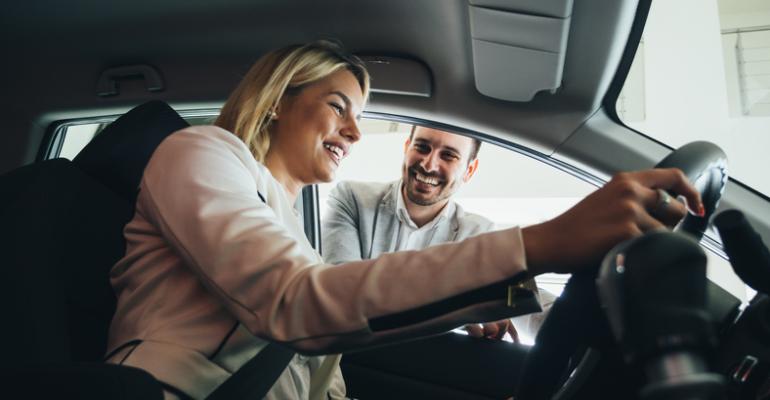Imagine a future where a customer’s end-to-end ownership experience is personalized, efficient and delightful. The industry has been envisioning this for decades, but it’s only recently that in-vehicle technology, connectivity, platforms and the ecosystem have matured enough to support it; even with the means, though, enormous execution challenges remain.
These execution challenges can be grouped into three categories:
- First is a revolutionary mindset shift from being vehicle-centric to creating human-centric ownership experiences.
- Second is prompted by this shift as automakers reconfigure their vehicle-centric operations to cater to the human experience.
- The last challenge stems from innovation as automakers learn to strike the right balance between maximizing near-term, connected-vehicle revenues and providing a fulfilling brand experience that yields enduring loyalty.
An industry with over 100 years of momentum is slow to change. We see this with the “features race” – where automakers compete to have the most advanced vehicle features. Advancement is often beneficial, but often new features fail to align with actual customer needs and interfaces and controls can be overly complex. These negative outcomes are a result of vehicle-centric thinking.
A similar historic challenge is the focus on vehicle sales vs. delivering on promises. It’s worthwhile for automakers and dealers to continue investing significantly in a seamless, efficient and enjoyable purchase experience. But, after the sale, the ownership experience is characterized by episodic transactions that fall short.
While automakers are working to improve the ownership experience, they’re failing to optimize the brand experience in a holistic way. This is because there is so much that goes into the ownership experience that remains invisible to the automaker – or at least that’s not being acted upon effectively.
Vehicle connectivity offers “always on” customer engagement and insight, as well as the information and tools to provide the holistic ownership experiences customers want. For example, think about all the touchpoints in the experience of a breakdown. You must contact roadside assistance, work with the service advisor, set up alternative transportation, get updates on the repairs, pay for the repairs and pick up your vehicle. At each of those steps, you are the integrator in the process.
Now, imagine a frictionless experience from breakdown to fixed vehicle returned to the customer’s garage, with data flowing from one touchpoint to the next so the customer doesn’t have to keep repeating the same information.
The ownership experience mindset shift requires automakers to take a true design thinking approach to make owners’ lives easier and to surprise and delight. Like the scenario above, this also requires integration and orchestration with ecosystem partners far beyond towtrucks and dealership service departments.
Iconic brands across entertainment, travel, fitness, etc. have disrupted the industries they were born in and have been showcasing the power of the “experience economy.” These brands are a living demonstration of what legacy automakers can strive for. However, the transformation required for these companies is massive.
The historic operating model for automakers is built around designing, engineering, producing and servicing vehicles. Therefore, when experience – not the vehicle – is the organizing principle, then all business functions must work together according to a new, integrated plan based on a holistic experience, not simply vehicle models and features.
This shift is even more challenging given the need for orchestration with traditional suppliers and the complex labyrinth of ecosystem partnersWhen automakers make this shift, they will have added experience development to their already complex product-development operational backbone. However, imagine the power of advertising that rises above the historic focus on styling and instead tells the story of customer brand advocates who love their ownership experience.
Every automaker has vehicle connectivity and each, to varying degrees, has begun business model transformation by deriving revenue streams from digital and connected services. The subscription economy has overtaken almost every industry and automakers are wise to capitalize on this opportunity.
However, automakers must remain ownership-experience focused, otherwise they risk pushing customers away, damaging the brand and not achieving the financial objectives that inspired the transformation. Automakers that prioritize ownership experience as the guiding objective will improve voice of customer insight, data monetization, enduring loyalty, cost of sales and achieve enterprise financial objectives.
 Iconic brands have shown the power of great experiences. Advancement in technology and maturity across the ecosystem offers all automakers the same opportunity and to profoundly improve their financial fortunes, but transformation – after 100-plus years of momentum – is enormously challenging. Indeed, it will take fortitude to stay disciplined along the journey. However, iconic brands give us faith that when you start with customer experience good things follow.
Iconic brands have shown the power of great experiences. Advancement in technology and maturity across the ecosystem offers all automakers the same opportunity and to profoundly improve their financial fortunes, but transformation – after 100-plus years of momentum – is enormously challenging. Indeed, it will take fortitude to stay disciplined along the journey. However, iconic brands give us faith that when you start with customer experience good things follow.
Randy Cox (pictured, above left) is a senior director in the Automotive & Mobility vertical within Capgemini Invent North America. He has over 25 years of experience in automotive in both industry and consulting roles at automakers, suppliers, dealers and technology providers.





